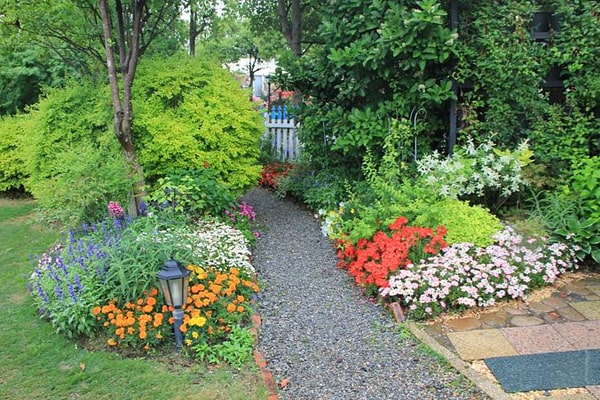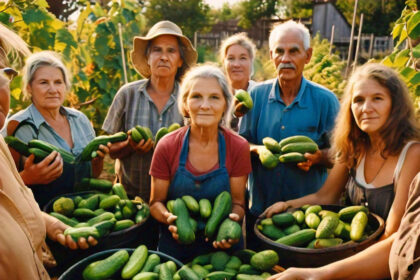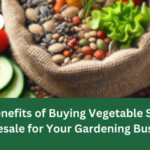
Gardening isn’t just about growing plants; it’s about cultivating patience, care, and a deep connection with nature. There’s something magical about placing a tiny seed into the soil and watching it transform into a thriving, vibrant plant. Planting Guide: How to Grow a Lush Garden with Well Grow Seeds.
It’s a reminder that everything grows with time, care, and the right conditions.
Whether you’re a seasoned gardener or a complete beginner, the journey of planting and nurturing a garden is both rewarding and therapeutic.
With Well Grow Seeds, you’re setting yourself up for success with high-quality seeds that can flourish in any space, from a sprawling backyard to a cozy balcony garden.
Let’s discuss the essential steps to create a lush, thriving garden with Well Grow Seeds!
Step 1: Decide What to Grow and Know Your Zone 
The first step in building your dream garden is deciding what you want to grow. Are you dreaming of a vegetable patch brimming with tomatoes, peppers, and cucumbers? Or perhaps a fragrant herb garden with basil, mint, and rosemary?
Maybe flowers are your passion, adding vibrant color and attracting pollinators to your space.
Once you’ve chosen your plants, research your hardiness zone to understand what grows best in your climate. The USDA Plant Hardiness Zone Map is a great tool to determine the best planting times based on your area’s frost dates.
If you’re growing indoors, consider how much natural light your space gets and whether you’ll need supplemental grow lights.
Step 2: Gather Your Materials and Start Planting
With Well Grow Seeds in hand, it’s time to prepare your planting materials. Here’s what you’ll need:
- Seed-starting mix
A light, well-draining soil that holds moisture without becoming compacted.
- Containers or seed trays
You can use biodegradable pots, plastic trays, or even repurposed containers.
- Watering can or spray bottle
Gentle watering helps prevent soil displacement.
- Grow lights or a sunny window
For indoor growing, ample light is crucial.
- Labels
Keep track of what you planted and when!
To plant your seeds, follow the instructions on the seed packet regarding depth and spacing. Lightly cover them with soil and water gently, and place them in a warm spot. Most seeds germinate best at temperatures between 65-75°F (18-24°C).
Step 3: Nurture Your Seedlings
Once your seeds sprout, it’s time to give them the best care possible:
- Watering
Keep the soil consistently moist but not waterlogged. Bottom watering (placing trays in a shallow dish of water) helps prevent overwatering.
- Light
Ensure seedlings receive at least 12-16 hours of light daily. If they start stretching toward the light, they may need a closer light source.
- Air Circulation
A small fan can help strengthen stems and prevent mold or fungus growth.
- Thinning
If multiple seedlings sprout too close together, trim the weaker ones to give the strongest plants room to grow.
Step 4: Transplanting and Outdoor Preparation
Once your seedlings have strong roots and at least two sets of true leaves, they’re ready to transition outdoors. But before planting them in the garden, they need to be hardened off and gradually introduced to outdoor conditions over a week.
Start by placing them outside for a few hours a day, increasing the duration each day. When transplanting, prepare your garden beds with nutrient-rich compost or organic matter.
Dig a hole large enough for the seedling’s roots, gently remove it from its container, and plant it at the appropriate depth. Water immediately after planting to help reduce transplant shock.
Step 5: Maintain and Enjoy Your Garden
Gardening requires ongoing care, but the rewards are worth it! Here’s how to keep your garden thriving:
- Water Consistently
Early morning or evening watering is best to minimize evaporation.
- Mulch
Adding a layer of mulch around plants helps retain moisture and suppress weeds.
- Fertilize as Needed
Organic compost or natural fertilizers keep your plants nourished.
- Watch for Pests
Check leaves for signs of pests like aphids or caterpillars and use organic pest control methods when needed.
- Harvest Regularly
For vegetables and herbs, frequent harvesting encourages continued growth.
Embrace the Journey
Not every plant will thrive, and there will be lessons along the way. But gardening isn’t about perfection—it’s about the process, the learning, and the joy of growing something with your own hands.
Whether you’re harvesting fresh veggies, enjoying fragrant flowers, or simply finding peace in tending to your plants, every moment spent in the garden is a rewarding one.
Conclusion
Gardening is a journey filled with growth, discovery, and the simple joys of nurturing life. Each seed planted is a step toward creating a greener, more vibrant space—whether it’s a full vegetable garden, a collection of herbs on a windowsill, or a bed of blooming flowers.
With patience, care, and well-grown seeds, you have everything you need to cultivate a thriving garden.
So, embrace the ups and downs, learn from every challenge, and savor the rewards that come from your efforts. Your garden is a reflection of your dedication, and with time, it will flourish beautifully. Happy gardening!




